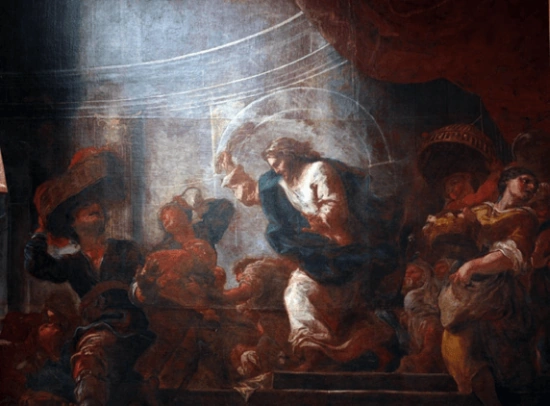838. That there be given them a mark upon their right hand and upon their foreheads, signifies an attestation of the acknowledgment that they are of the church, and are in the so-called truths and goods of that faith. This is evident from the signification of a "mark," as being a sign or attestation of acknowledgment, here that they are of that church; also from the signification of "right hand," as being the truth of faith in its power (See above, n. 298); also from the signification of "forehead," as being the good of love (See also above, n. 427. So here "the right hand and the forehead" signify the so-called truths and goods of that faith, which, nevertheless, are either not truths and goods or are falsities and evils. The acknowledgment of these as truths and goods however is signified by "giving and receiving a mark upon their right hand and upon their foreheads." A "mark" signifies a sign of acknowledgment also in the following passages in Revelation, 14:9, 11; 15:2; 16:2; 19:20; 20:4. Moreover, a "mark" has a similar meaning as:
The sign set by Jehovah upon Cain (Genesis 4:15);
Likewise the sign that the prophet was commanded to set upon the foreheads of the men in the city of Jerusalem (Ezekiel 9:4);
as also the "sign" in Moses:
Thou shalt love Jehovah thy God with all thy heart and with all thy soul and with all thy might. Thou shalt bind them for a sign upon thine hand, and they shall be for frontlets before thine eyes (Deuteronomy 6:5, 8; 11:18).







